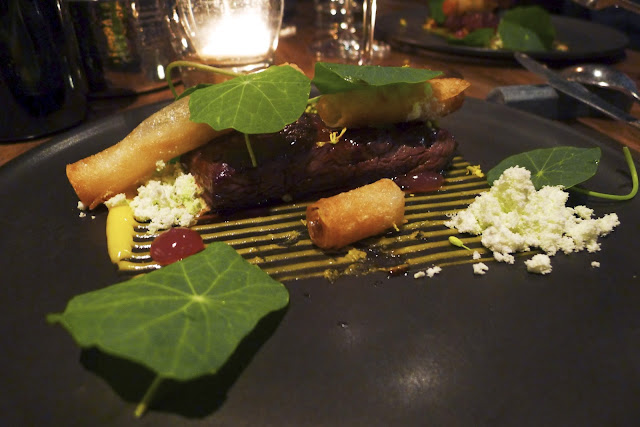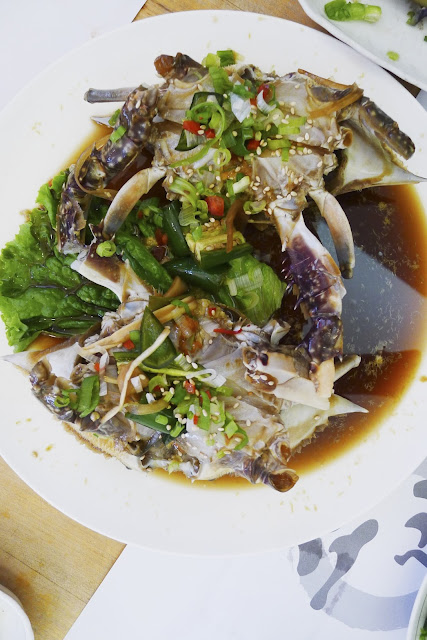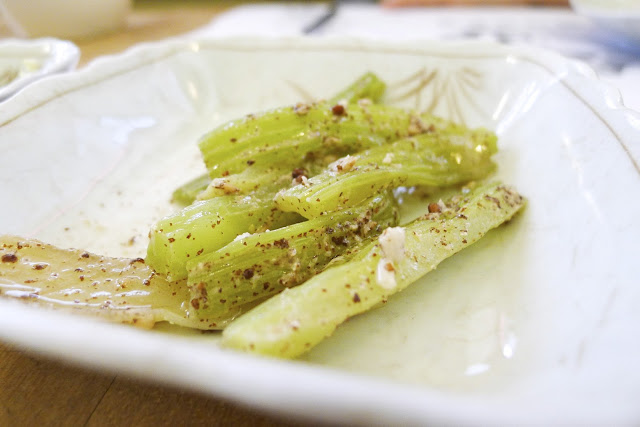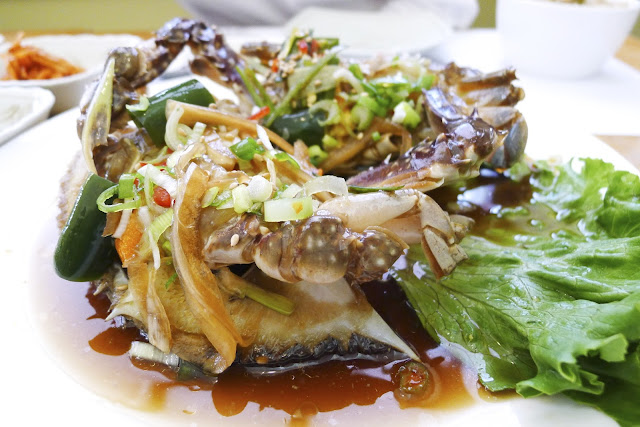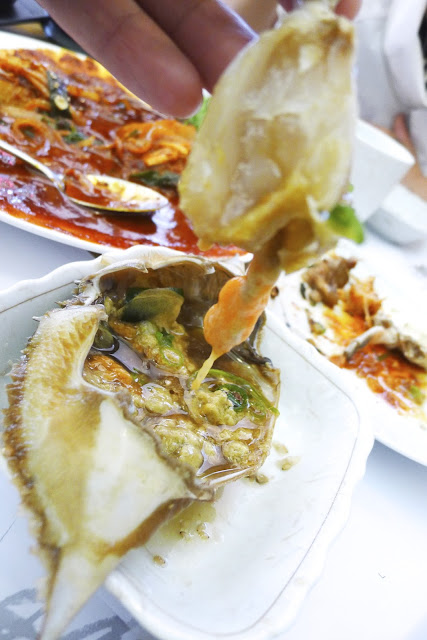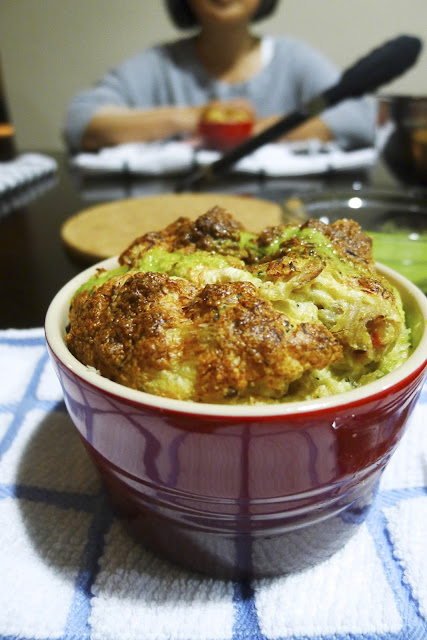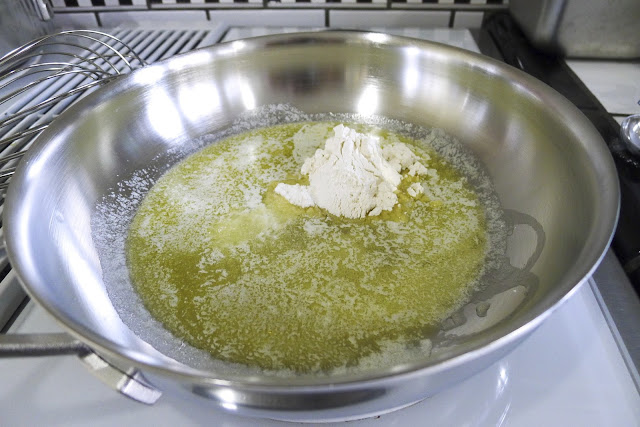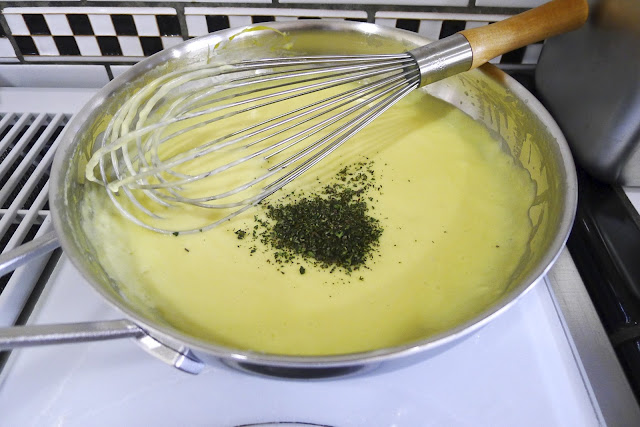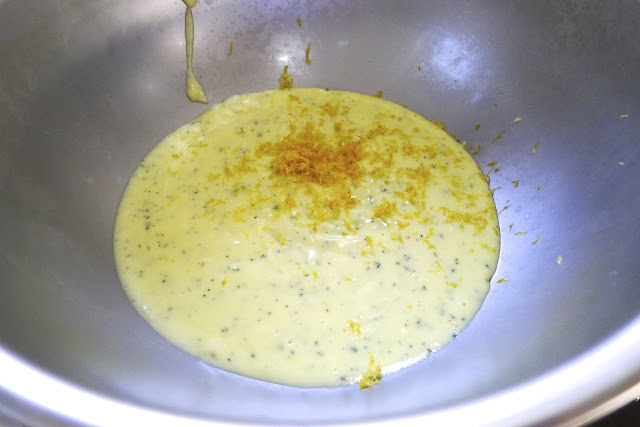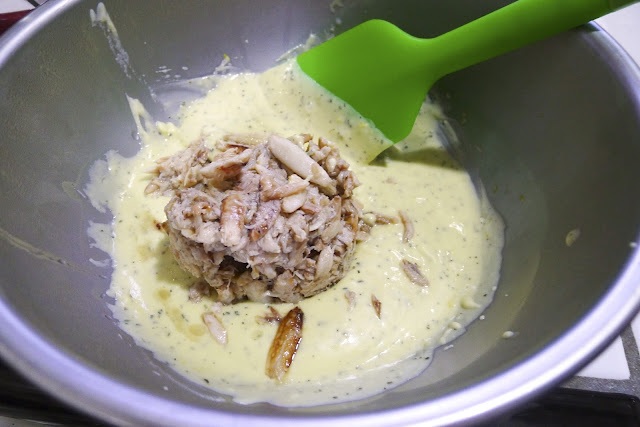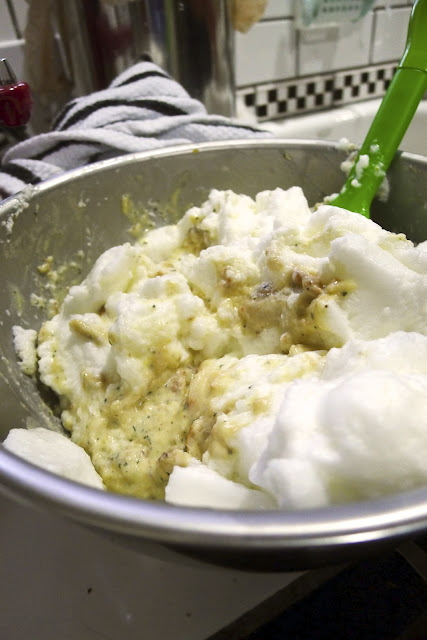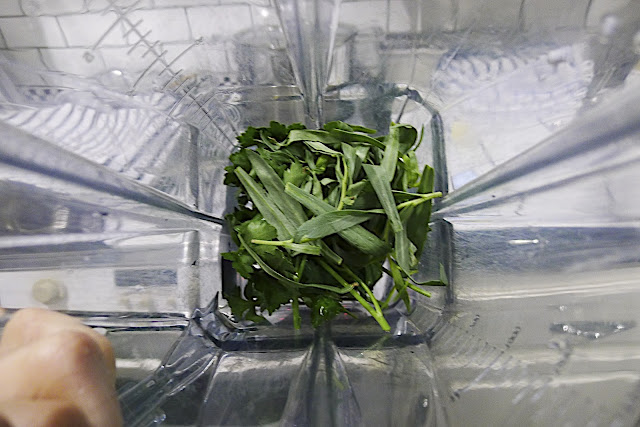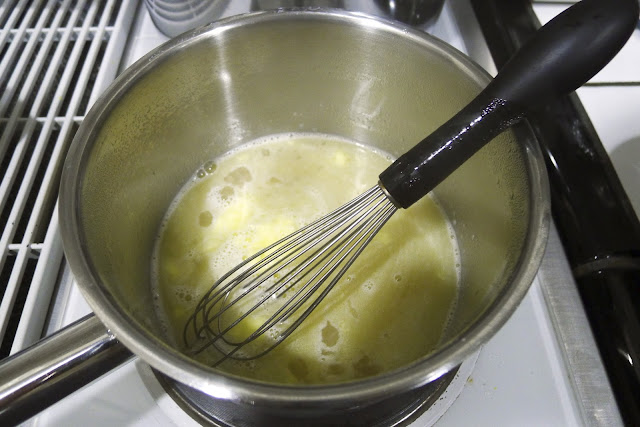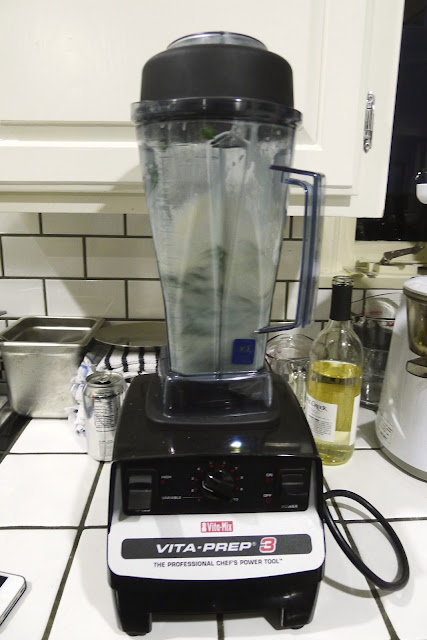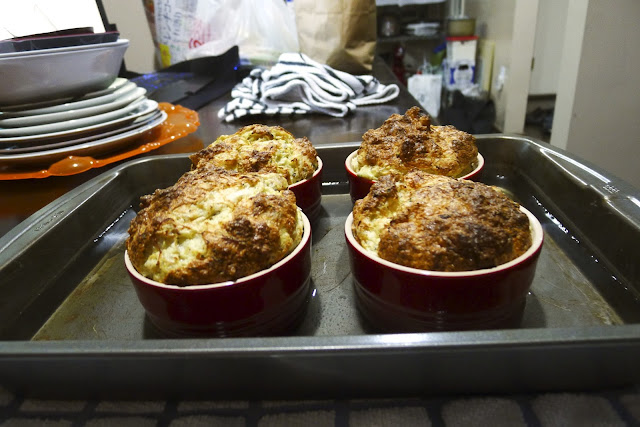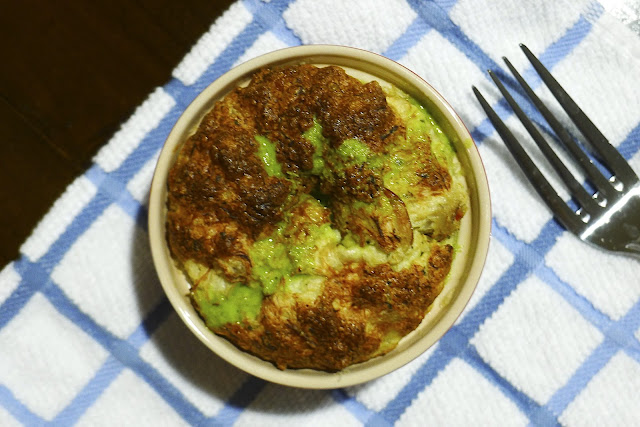tang & bolster
Tuesday, October 2, 2012
ink. omakase
No need to hash out the fact that I love the Voltaggio brothers again. And I know I've already posted on ink. before. But after eating there again for my dad's birthday earlier this year, I felt compelled to share the omakase option at ink.
Although the omakase seems overpriced, in certain ways, it's worth it. There's something to be said about experiencing what, in the chef's mind, is a true representation of himself or herself in a set number of courses. You get to try a further refined version of an already refined menu. And just as the word, "omakase," suggests, you put your trust in the hands of the chef.
The omakase menu is simple, leaving no room for options outside of choosing your dessert.
The five-course meal started off with its strongest: Scallops. These beautiful, perfectly seared scallops came flanked by pieces of silky tofu that mimicked the scallops in appearance. Eaten with the bitter and rich cocoa ash, the soy-based "black vinaigrette," green onion tapioca, and an amazingly delicate rice cracker with bits of nori, this dish was heaven.
It was a quick reminder of Michael Voltaggio's innovative and balanced flavor profiles, playful techniques, beautiful presentation, and Asian influences. Everyone (maybe it was just me) scraped up every last bit of tapioca, ash, and sauce before waiting excitedly for the next course.
The second course was a beautifully simple presentation of Foie Gras. A dragon's portion of cool foie gras with a pair of waffle wings, a pickled shallots and dandelion greens spine, a smoked maple marshmallow tail, and a handful of sriracha fireballs.
This was a flavor bomb. The first few bites were a little strange, but the more I ate, the more I understood the concept and combination of flavors. The rich fattiness of the foie cut through by the acidic pickled shallots, the gentle spicy sweetness of the sriracha accompanied by a toned-down interpretation of waffles and maple syrup. Although it took a few attempts to get the proportions to my liking, a perfectly portioned bite was exactly that: perfect.
My second-favorite of the night was the third course: Branzini. The mushroom oatmeal was almost identical to the Hot Mushroom Cereal from last time, which was a real win for me because that was one of my absolute favorites from last time. The fish flaunted a golden-crisp layer of skin that cracked open to delicate and rich meat. The fragrant and crispy enoki mushroom hay was addictive, and the clean mushroom broth was perfect with the fish's salty skin.
The fourth course was a play on Steak Frites. The beef seemed sous vide. If it wasn't, it was cooked really darn well. Medium-rare from tip to tip with an even sear. Either way, the beef rib cap melted in my mouth with absolute ease. The frites came in the form of potato cigars that were light, crisp, and preferable to a more traditional mountain of fries. The plate also came with a deconstructed béarnaise sauce: an egg yolk purée raked along the base like the sand of a zen garden and two powdery patches of tarragon butter. And because a plate of steak frites would never be complete without some form of onion, the plate came with a couple dollops of pickled shallot jam.
ink. had four dessert options that night, but I raved so much about the Grapefruit dessert and the cilantro sorbet that my family decided to double up on that one. Just like last time, the balance of grapefruit, creamy cilantro sorbet, avocado cream, and charred lime merengue was irresistible. I regretfully didn't ask for another scoop of the cilantro sorbet this time though. So good.
We also had the Apple dessert from last time, which was just as interesting and delicious as last time. The burnt wood ice cream was especially delicious this time.
But the most interesting dessert was the Chocolate dessert. This came with a creamy, dark chocoloate ice cream, spiced tofu cream, fluffy chunks of black sesame cake, and towers of chocolate ganache. I typically don't like chocolate desserts (I know I say that all the time), but this was pretty amazing stuff. The combination of chocolate and black sesame really reminded me of what would be a modern Japanese dessert, and the spiced tofu lightened up the plate with just the right finesse. Pretty great stuff.
If you only have one opportunity to go to ink., I'd recommend going with small plates because you get to try more things. You also get more bang for your buck. But if you're looking to celebrate a special event and want each person to experience each dish in its intended portion, consider the omakase option. Either way, you'll get some kickass food.
ink.
8360 Melrose Ave
Suite 107
Los Angeles, CA 90069
(323) 651-5866
http://mvink.com/
GET: To ink.
Labels:
Los Angeles
Thursday, September 27, 2012
Soban
Apologies for the delay in posting. Searching for a job/apartment/car, as well as a couple weddings, has really put me back. But I think I'm getting into the groove of things again, so let's just pick up where we left off, like a couple of old friends.
Next to Mexicali Taco & Co., Soban is the only other place I make a point of going to on every trip back to L.A. And like Mexicali, Soban has found a way to nestle its way into my soul, almost to the point where writing about it is absolute torture. But with the hunger pangs still fresh from writing about Mexicali, I figured I should just push through this one as well.
A soban is a low, wooden table typically used for family eating, and the name for this restaurant could not be more appropriate. When you eat here, you're either eating with family, or it sure as hell feels like it. The food here is, at its heart, comforting. It's food that you feel in your gut, that makes your eyes roll back, that gives your spine a tingle, and that makes a single tear roll down your cheek. As if that weren't enough, Soban's food often shocks your tongue to life, elevating familiar flavors by just enough to leave you excited to eat more.
Service is almost always fast, attentive, and friendly, even when they're slammed and in the zone. Lots of dishes come with some tableside service, which can be fun for first-timers.
Like a well-stocked Korean home refrigerator, every meal starts with anywhere from 12 to 15 banchan plates.
Most of them are staples, but a few are unique to Soban. Even with the staples, Soban does them better, as if to say, "Why do a dried out piece of egg when you can do a silkier, more delicate version?" Thankfully, my favorites are almost always in the set.
For me, the Deulggae (wild sesame) (also, romanizing Korean is a ridiculous venture) Seasoned Celery goes down the hatch in a matter of seconds. Perfectly blanched celery with just enough preserved crisp and give. Each bite is cool and refreshing, but also a little sweet and nutty.
The Seasoned Parsley is my second favorite. It uses classic Korean seasoning techniques, but with a non-traditional vegetable. The result is a very herbal, cleaner, and punchier version of a typical Korean Seasoned Spinach.
And as if the banchan spread wasn't enough, you also get your choice of either white rice or jakgok rice. I almost always go for the jakgok rice because of its more complex and often more satisfying flavor, complete with a mix of beans and chestnuts. But I understand that sometimes white rice is just too darn good to pass up.
Before we get to my absolute favorites, let's look at some of Soban's other stellar offerings. The Haemul Dooboo Jun can be a full meal on its own. It's a hefty, crisp, and satisfying plate of three to four seafood tofu pancakes packed with the flavor of sesame seeds and green onion. The amount of toothsome octopus and squid is just right, and the accompanying sauce adds a salty and citric touch.
The Dwenjang Jjigae is one of the best I've had in L.A. My mom makes a mean dwenjang jjigae, so I can't give this fermented soy bean stew too much praise, but I will say that it's the best I've had in a restaurant outside of Korea and my parents' home. Comforting, savory, rich, and refreshing, this stew hits all the right notes on a rainy day.
The Saengtae Tang is an exceptional pollock stew with a beautiful, delicate broth. My mom doesn't really like adding anything spicy to saengtae tang, and that's what I grew up with, so I always get this without the default addition of red chili powder. The stew is huge, packed with a colorful mix of squash, onions, and other vegetables, generous portions of tofu, and a perfectly-cooked body of a pollock. The fish meat flakes at the touch of a fork and its subdued flavor lends itself to rounding out a clean and refreshing stew. If you see some strange-looking intestinal things floating in your stew, don't say anything and just pop it in your mouth. You might be pleasantly surprised.
Now let's get to the outrageously exceptional stuff. First up, the Hanchi Moolhwae, a shocking display of sliced radish and noodles made out of cuttlefish, topped with abalone, and flanked by tobiko, squid ink tobiko, and green sprouts. Sometimes they throw in some julienned Asian pear, too.
Depending on how spicy you want it to be, someone will pour on a gochu jang (red chili paste) and rice vinegar based sauce that tastes like it has some oysters or something ocean-based mixed into it. I usually go with half-spicy or less, just because I'm afraid that too much spice will take away from the freshness of the abalone and cuttlefish. It would probably be really tasty on its own or on some rice, but refrain, and let the process continue.
Next, they'll ask if you want some ice water to pour into your bowl. I know, it sounds weird, but just let them do their thing.
The result is unforgettable. Toothsome and refreshing cuttlefish noodles, crunchy and flavorful bits of abalone, crisp strands of radish, sharp and brief notes of green sprouts, and addictive bursts of tobiko. The ice water essentially becomes a cool soup laced with the chili-vinegar sauce. If you're still full after all the noodles, throw in a bowl of rice (preferably white, in this case) into the soup and enjoy.
Next up, the Galbi Jjim. Now, I think I've said before how every Korean kid claims their mom has the best rendition of this dish, but this is the closest any restaurant has gotten to getting me to say that it's as good as my mom's. Sweet, succulent gems of perfectly braised short rib, swimming in an addictive pool of a sweet and salty sauce and accompanied by pine nuts, dates, strips of orange rinds, and delicate strands of egg.
Like the Saengtae Tang, I prefer this dish without the optional spice, but I will say that the spice is a great way to cut through some of the sweetness. Both are incredible, so get on it. And either way, get some rice on your spoon and dip it into the braising sauce. So, so good.
The third of my four staples is their Eundaegu Jorim. I am a sucker for this dish. If it's on a menu at any Korean restaurant, I immediately want to get it. Something about it speaks to me, and over a bowl of rice, it's a killer.
Like everything else I've tried at Soban, the Eundagu Jorim here is objectively better. The black cod is perfect: silky, supple, buttery, and flaky. The braising sauce is just sweet enough with just the right amount of spice. Usually, I don't go for the spice (if you haven't noticed already), but this is the exception. The vegetables and tofu, like those in the Galbi Jjim, are infused with the addictive braising sauce. And also like the Galbi Jjim braising sauce, taking a spoon of rice and dunking it in the braising sauce is obligatory.
Before I continue, I have to give a shout out to Steph C., who essentially put this place on the map. But I have to attribute credit to my mom for finding out that Soban's specialty is their Ganjang Gaejang, my fourth and final staple.
A literal description of what this is just doesn't do it justice. I mean, really, when did marinating raw crab and slurping it out of its shell ever sound appealing? SINCE FOREVER.
With a smell brimming on the edge of musky East Asian medicine, a cold plate arrives with two crabs, split in quarters or halves, relaxing in a pool of delicious, briny marinating juices. Don't be intimidated by the loose, slippery texture. Just go for it.
For those who are unfamiliar with how to eat the stuff, proceed as follows:
(1) Pick up a quarter with your fingers.
(2) Take a second to marvel at the beautiful, shiny gem of a morsel you are about to eat. I mean, look at those eggs!
(3) Pick it back up and suck. Yum. At this point, you should be tasting the ocean, along with some ginger and ginseng, a little spice, just a touch of vinegar, and a sweetness similar to an herbal date.
(4) Depending on how much you love what you're tasting, continue sucking until you get every last bit of that translucent crab meat.
(5) Continue until only the crab's carapace remains with all of its guts and glorious juices.
(6) Get some rice in that business and mix it up.
(7) Enjoy.
(8) Scrape every bit of amazingness.
(9) You've probably guessed this by now, but take whatever rice you have left and dip a spoonful into the marinating juices. So, so, so good.
(10) Let the single tear roll down your face as the plate is cleared from your table.
(11) Maddeningly attempt to get the smell of Ganjang Gaejang off of your fingers.
(12) Revert to unabashedly smelling your fingers as another single tear rolls down your face.
(13) Look longingly at the unadulterated plates of Ganjang Gaejang arriving at other tables.
(14) Hiss at the other tables.
(15) Make a creepy grimace until the other tables get uncomfortable.
(16) You should have stopped reading this by now.
Every meal ends with one of my favorite renditions of Shikhae. My biggest problem with most is that they're either too watery, too sweet, or both. But this. Just enough sweetness and just enough horchata-like texture to make this a wonderfully refreshing way to end the meal.
Despite having gone to Soban over a dozen times now, there's a lot on the menu that I haven't tried. Probably because I only get to go to Soban once every time I go to L.A. And probably because the dishes I always make a point to get are just too absurdly delicious. Oh well. Next time, I say, next time.
Soban
4001 W Olympic Blvd
Los Angeles, CA 90019
(323) 936-9106
http://www.sobanusa.com/
GET: Ganjang Gaejang; Galbi Jjim; Eundaegu Jorim; Hanchi Moolhwae.
Labels:
Los Angeles
Thursday, August 23, 2012
Jerry Traunfeld's Crab and Lemon Thyme Soufflé (5/24)
The last time Jerry Traunfeld's name found its way onto this here blog was when I tried my hand at his roast chicken last year. I left that experience with very good thoughts on his approach to cooking, so I dutifully snooped around the Internet for a Jerry Traunfeld recipe that I could use in this year's soufflé project. The result? A recipe for a crab and lemon thyme soufflé with a parsley-tarragon butter sauce. Sounded amazing. And it was amazing.
The concept was intimidating, but everything was actually relatively simple. First, melt the butter and whisk in the flour.
Add the milk and salt and whisk until the mixture boils and thickens.
Remove from heat, whisk in the egg yolks, and then add the minced lemon thyme.
Transfer the soufflé base to another bowl. I added some lemon zest because I just felt like I wasn't getting enough lemon from the lemon thyme alone. Place plastic wrap over the surface of the base and set aside.
While the base cools to room temperature, butter the soufflé dishes and coat with bread crumbs.
About 45 minutes before serving, preheat the oven to 375 degrees and start whipping the egg whites.
As the egg whites slowly start to stiffen enough to form free-standing peaks, fold the crab meat into the base and season with salt and pepper.
Gently fold the egg whites into the soufflé base.
Fill a roasting pan or similarly oven-proof container with water so that the ramekins are half-immersed. Toss the entire apparatus into the oven for at least 30 minutes.
Meanwhile, make the parsley-tarragon butter sauce. Start by placing the parsley and tarragon into a blender.
Combine the lemon juice, minced shallots, and salt into a saucepan until the mixture boils and reduces by half.
Then, at low heat, slowly whisk in the butter. Keep the sauce on low heat.
About 5 minutes before serving, pour the shallot-wine-butter sauce into the blender with the parsley and tarragon.
Blend until smooth. The sauce should be an alarmingly bright and vibrant green. Season with more salt to taste.
At this point, the soufflés should be done: golden-brown, puffy, and fragrant.
The water contraption can be difficult to move around, so be careful. Thankfully, these guys held up for a relatively long time without deflating.
Create a hole in the center of each soufflé with your spoon and pour in a generous amount of the sauce.
The end result was complex in flavor, comforting in temperature, and crisp and fluffy in texture. My first spoonful released a plume of addictive smells: the familiar smell of a freshly baked croissant, an unimposing cloud of lemon and parsley, and brief hints of licorice and wine.
The smell of crab only reached my nose as I was about to take my first bite. I hesitated for a short second before placing the spoonful into my mouth. A thin and giving shell, a satisfying but not overpowering flavor of egg, strong herbal notes, and generous chunks of toothsome buttery crab meat. The faint flavor of wine married the various acidic and basic ingredients into a cohesive, addictive soufflé.
This was probably the best savory soufflé I've had in a while--at home or in a restaurant.
The entire soufflé crawled its way into my stomach in a matter of seconds, like a small army of sprinting, outrageously delicious sand crabs, leaving momentary imprints on my tongue.
I know I'm already insanely behind on this project, but I just might have to make this one again before the year ends.
Until next time, Jerry Traunfeld.
Labels:
24 Soufflés,
Home
Subscribe to:
Posts (Atom)





